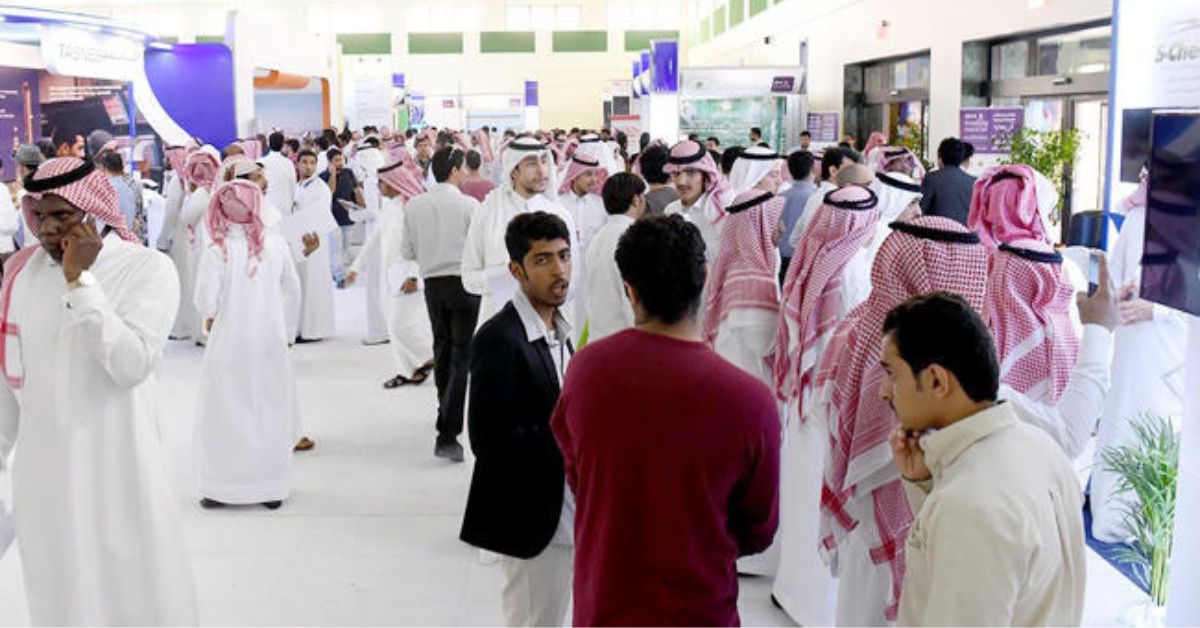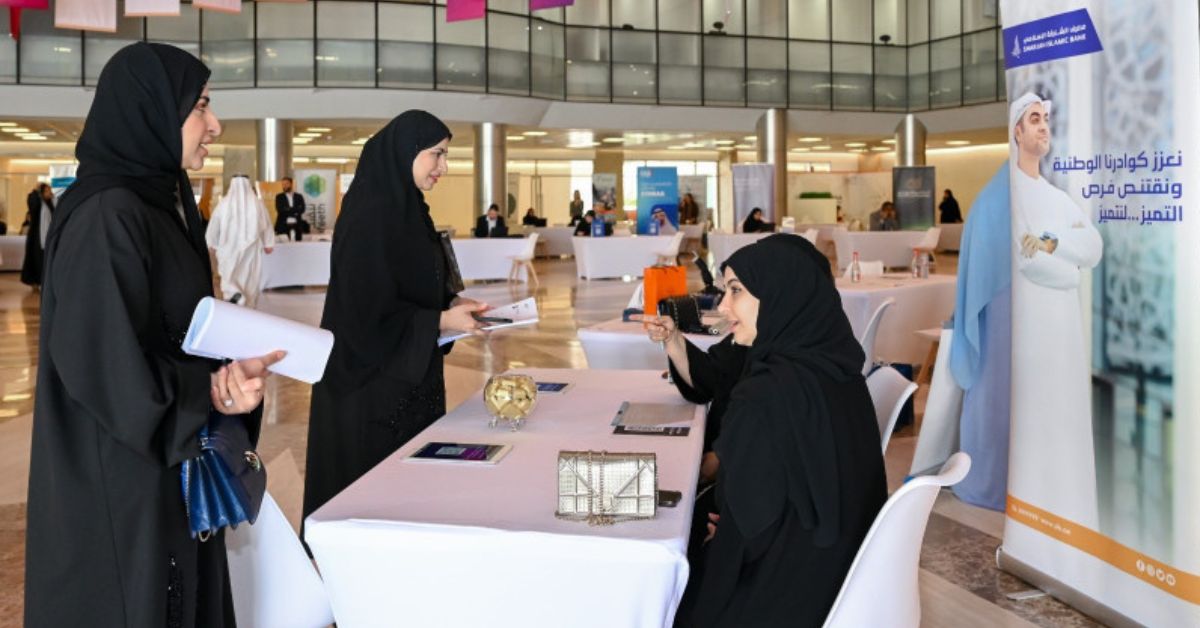DUBAI — The Arab region boasts the world’s highest youth unemployment rate, necessitating the creation of over 33.3 million job opportunities by 2030 to accommodate the large influx of young individuals entering the labor market each year.
To achieve this goal, Arab countries must undergo significant transformations in their existing education systems and curricula, which currently do not align with the evolving labor market and its dynamic nature.
According to UNICEF, these changes involve strengthening education systems, including education, skills training, and technical and vocational education, enhancing the connection between learning and the labor market, fortifying policies, and exploring collaboration opportunities with the private sector to generate jobs and foster youth entrepreneurship.
Youth unemployment in the region stands at nearly double the global average and has grown 2.5 times faster than the worldwide average. According to a United Nations survey, the Arab region held the highest unemployment rate in the world in 2022, at 12%.
At A Glance High Youth Unemployment in the Arab Region: The Arab region currently faces the highest youth unemployment rate in the world, necessitating the creation of over 33.3 million jobs by 2030 to accommodate the influx of young individuals into the labor market. Transformation of Education Systems: Significant transformations are needed in Arab countries' education systems and curricula to align them with the evolving and dynamic nature of the labor market. Youth Unemployment Statistics: Nearly double the global average, youth unemployment in the Arab region stands at 12%, with a 2.5 times faster growth rate than the worldwide average since the COVID-19 pandemic. Demographic Challenges and Youth Dissatisfaction: The demographic profile of Arab youth results in increasingly limited job opportunities, leading to high levels of dissatisfaction and considerations of emigration for better opportunities. Educational System Incompatibility: Most Arab countries' current education systems are not aligned with the labor market's needs, failing to equip young individuals with necessary skills like critical thinking and creativity. Emerging Job Market Trends: There is a high demand for workers in the green economy, artificial intelligence, data jobs, and new roles in engineering and cloud computing, requiring an adaptation in educational institutions. Corruption as a Key Barrier: The 2022 Corruption Perceptions Index indicates a decline in transparency and anti-corruption performance in most Arab countries, with corruption identified as a significant obstacle to development. Economic Centralization and its Impact: The historical state-led development approach in Arab countries has led to bloated government sectors, contributing to high youth unemployment and diminished skill levels. Strategies for Job Creation and Economic Growth: Addressing the structural issues in non-oil Arab countries is crucial, focusing on stimulating the private sector and reassessing educational curricula to align with the Fourth Industrial Revolution.
Unemployment has surged since the outbreak of the COVID-19 pandemic, especially among Arab youth. Egypt, Jordan, Lebanon, Sudan, and Tunisia are likely to face challenges due to the global economic downturn.
According to researcher Basma Al-Momani in a Carnegie Foundation report, the demographic profile of Arab youth means that an increasing number of young people enter the labor market each year with progressively limited job opportunities.
On the ground, opinion polls indicate that Arab youth are among the most dissatisfied demographic groups in their respective countries. They often contemplate emigrating to seek better opportunities and improved living conditions, which their governments have struggled to provide. Several factors contribute to the high unemployment rates in Arab countries.
Incompatible educational systems with the labor market
Most Arab countries’ current education systems do not align with the evolving labor market and its changing nature. According to a research paper by the Carnegie Middle East Center, these systems fail to equip young individuals with the necessary skills for success in today’s primarily knowledge-based economy.
According to the paper, “Arab governments still view education reform as a top-down effort that continues to perpetuate power relations and authoritarian thinking, leading to the marginalization of critical and creative thinking among students.”
Newly required skills include communication, creativity, critical thinking, problem-solving, collaboration, and the ability to address the challenges posed by automation. According to a study by the World Economic Forum, the reliance on machines for all jobs will reach 52% by 2025.
The study also reveals that half of the workers who retain their jobs over the next five years will need to acquire new skills. This suggests that employers will evenly distribute their workload between humans and machines by 2025.
There will be a high demand for workers who can fill positions in the green economy, cutting-edge data jobs, artificial intelligence, and new roles in engineering, cloud computing, product development, and management.
Furthermore, the study highlights a significant deficiency in Arab schools and universities when it comes to adopting and teaching these new specializations and providing students with the fundamental and advanced skills required by the global labor market.
The corruption issue
Transparency International has released the 2022 Corruption Perceptions Index, which assesses transparency and anti-corruption performance in 180 countries worldwide.
Most Arab countries experienced a decline in their rankings, with the region’s average dropping to a new low of 38 out of 100 on a scale where zero indicates a highly corrupt country.
As per the report, Syria ranked first in the Arab world in terms of the most corrupt countries in the region, followed by Yemen, Libya, Iraq, Lebanon, Egypt, Algeria, Morocco, Tunisia, Kuwait, the Sultanate of Oman, Bahrain, and Jordan. Meanwhile, the UAE, Qatar, and Saudi Arabia recorded the highest scores for their efforts in combating corruption among the region’s countries.
Arab countries acknowledge that corruption is the most significant obstacle to development. It acts like an epidemic that costs their economy billions of dollars annually, without a serious political will for change and reform.

Economic centralization
During the 1960s and 1970s, most Arab countries embraced a state-led development approach. As a result, Arab governments became significant employers of labor, leading to the formation of bloated government agencies ill-equipped to absorb the large influx of young individuals entering the workforce each year.
This trend has contributed to higher rates of youth unemployment, diminished skill levels, and prolonged waiting periods between graduation and securing a first public-sector job.
Additionally, this approach has limited flexibility in the labor market, with the state serving as the primary employer, while reducing the private sector’s role in addressing unemployment, thereby exacerbating the problem.
Non-oil Arab countries must expand job opportunities to accommodate the unemployed and newcomers to the labor force. The persistent issue of high youth unemployment suggests that the problem is primarily structural in nature. Its resolution calls for robust and sustainable economic growth capable of generating employment opportunities, within a stable economic environment free from corruption and excessive state control. This approach should focus on stimulating the private sector.
Achieving this objective will also require a comprehensive reassessment of educational curricula and methodologies. It should involve the introduction of specializations that align with the spirit of the Fourth Industrial Revolution and address the new challenges it presents.








